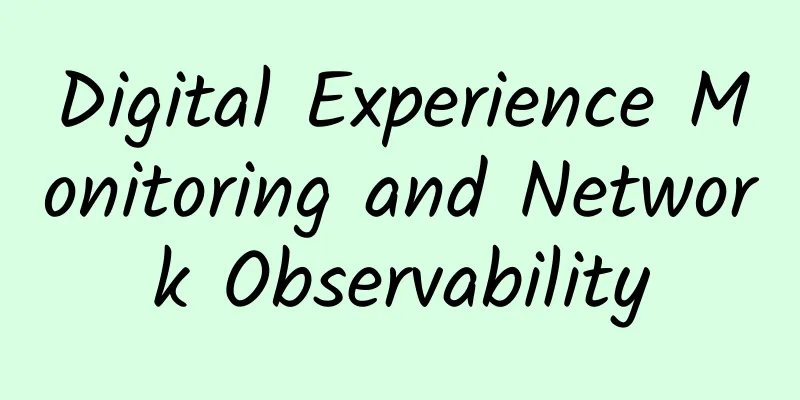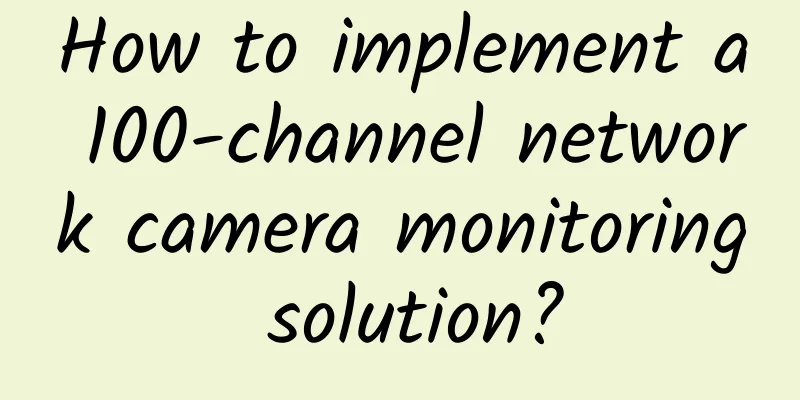Digital Experience Monitoring and Network Observability

|
It’s clear that in the business world, digital operations have become an advantage. Companies that embrace digital transformation early outperform their peers. As a result, more companies are now eager to accelerate their digital transformation pace, moving more workloads to the public cloud, adopting SaaS applications, and embracing distributed application architectures. Digital transformation brings new challenges to IT organizations. In particular, many applications and services delivered to customers and employees are increasingly not owned or controlled by IT teams. However, they are still responsible for the delivered experience, i.e. performance, uptime and overall reliability. Gartner said in a recent study that by 2023, 60% of digital business initiatives will require IT to report on the digital experience of users, up from less than 15% today.
What is DEM? Digital experience monitoring is a form of active black-box monitoring. Rather than relying on capturing metrics, events, flows, or alerts from devices, DEM aims to simulate the experience that end users have with infrastructure, applications, or services. DEM essentially has two levels: network and application. The former measures how the network supporting an application or service performs. The latter adds application-level transactions, often scripted (such as logging in, adding items to a digital shopping cart, etc.) to simulate how a human (or machine) perceives the performance of an application or service. How to start using DEM? As with most undertakings in life, the initial first steps are important. For network operations (NetOps) teams in particular, moving toward Layer 2 DEM, starting with the network, is an extremely important first step. Of course, much of the network infrastructure of interest is beyond the direct ownership and control of the NetOps team, which means that traditional methods that NetOps teams have relied on for decades, such as SNMP or NetFlow, cannot be used. To gain the visibility they need, NetOps teams must adopt and deploy network comprehensive measurement tools in addition to their existing network observability solutions. Issues to note Finding the right tool for the job is never easy, but here are some guidelines that can help NetOps teams navigate the DEM hype: First, make sure your choice adheres to the principles of the “three E’s.” A network synthesis tool must be easy to try, easy to use, and easy to maintain. For example, if it takes more than a few minutes to try out the product and get first measurements, your initial production deployment will be complex and consume time and resources for you and your team. Second, always think about Day 2 issues from the beginning. If a tool requires a lot of manual test tuning and maintenance as your environment changes, your insights into the digital experience will be costly. For example, if your business wants to measure only applications that generate network traffic above a certain threshold, or TopN, you want the tool to be able to automatically turn synthetic tests on and off without operator involvement. Then, you want to make sure your network synthesis tool supports the testing frequency your business requires. Sure, there are some use cases where a one- to five-minute testing interval is sufficient. But there are many others where this is not the case. Consider certain IoT scenarios where a few seconds of downtime or milliseconds of latency variation really matter. In these scenarios, infrequent monitoring is tantamount to flying blind: for your critical applications and use cases, the ability to perform sub-minute or continuous testing is important. Finally, be careful with your wallet. Many vendors act like robbers, charging you exorbitant prices even for relatively infrequent testing. Do your homework and map out the number of monthly tests you’ll need, keeping in mind that this number can and will grow quickly. For example, testing your network across 21 sites (three public cloud providers, ten branch offices, and three regions each in two data centers) with a 1-minute test interval would add up to about 18 million tests per month. Add a few applications and SaaS services, or more frequent testing, and you’ll quickly be in the hundreds of millions of monthly tests. Scale your monitoring correctly, test only what’s important, and test as frequently as you have to, and not more. in conclusion When enterprises successfully supplement the traditional network observability stack with DEM tools, they will be able to gain insight into the performance and availability of networks and services beyond the enterprise firewall. Network operations teams will find themselves more proactive in addressing potential customer experience issues, such as higher than normal latency in critical applications. By understanding the need to shift and identifying the right tools for the job, network operations teams can visualize and analyze the end-user experience and understand how to effectively protect it. |
<<: ByteDance 2: How many methods do you know to optimize HTTPS?
>>: Mobile 2G 3G 4G 5G Communication Base Station Architecture Evolution
Recommend
Quick questions and answers: 20 killer questions for computer network interviews
[[414422]] This article is reprinted from the WeC...
Should I turn off my router when I go to bed at night? This is a question
Nowadays, many people have WiFi at home and have ...
Python Programming: How Much Do You Know About Core Protocols: Function Protocol Numbers and Context Management Protocols
Preface In the previous few articles, several cor...
OlinkCloud: $5.6/month KVM-1GB/10G SSD/500GB/San Jose
Tribe shared the news about Olink.Cloud in Novemb...
The future of optical communications: innovation and integration of PON technology
Author | Heye Review | Chonglou With the continuo...
[Black Friday] spinservers: 10Gbps San Jose/Dallas servers starting at $89/month, 50% off on all hybrid servers, $200 off on high-end servers
The Black Friday promotion of spinservers continu...
HostYun Hong Kong Tsuen Wan AMD series VPS simple test
The day before yesterday, we shared the informati...
IPv6 Multicast Technology and Dual Protocol Stack Technology
1. IPv6 Multicast Technology IP multicast is an e...
DesiVPS: $110/month-2*E5-2670v2/64GB/1TB SSD/30TB@10Gbps/San Jose data center
DesiVPS is a foreign hosting company headquartere...
RackNerd: AMD Ryzen series KVM adds Seattle data center, starting at $14.18 per year
RackNerd has previously launched AMD Ryzen CPU+NV...
HostKvm New Year Offer: Hong Kong Cloud 4G Memory Package Annual Payment Discount Only $60/Year
HostKvm is a foreign VPS service provider founded...
5G is coming soon. Will it save you money? Operators: Stop dreaming!
According to national planning, 5G will be put in...
HostHatch: 1TB VPS with a large hard drive starting at $35 per year, in data centers in Hong Kong, Singapore, Japan, etc.
HostHatch updated the latest information on LET t...
Huawei builds a government cloud platform to help the "Millennium Ancient Capital" develop
[[188583]] "E-government is currently in a p...
5G packages are cheaper, with the price per GB of traffic reduced to 4.4 yuan: Do you meet the requirements?
In November 2019, when 5G was officially commerci...









